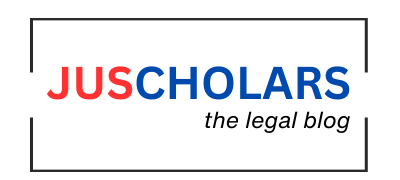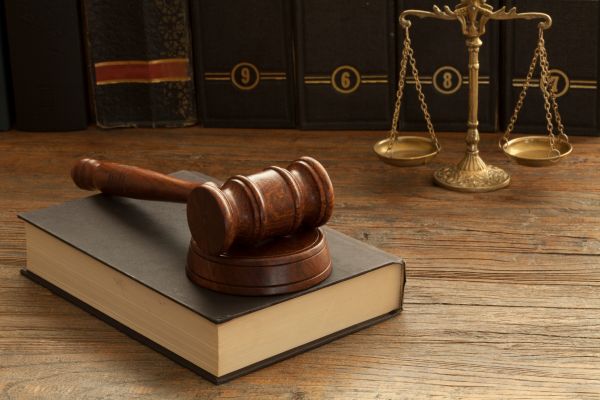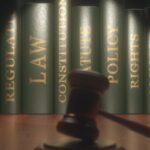Introduction
The evolution of music as an artistic expression is profound, yet legal frameworks often fail to keep pace with creative innovation. When music is treated as property, creativity, ownership, and the rights of artists become intertwined, and legal matters become complex. As we navigate this tangled web, we end up with numerous issues brought about by copyright law, ownership conflicts, and the ongoing digital revolution of music.
Music, traditionally, has been seen as a collective art which is a common experience of culture that is outside the bounds of ownership. But with the advent of copyright laws, music began its transition from being a collective part of the culture into a commodity. The process transformed the concepts of music from being part of the collective heritage of the people into commodities that can be exchanged, bought, and sold. As a result, the very essence of musical creation has been altered as artists now find themselves grappling with questions of ownership and originality in ways that can stifle their creativity.
This article delves into the implications related to music copyright, all the while examining its current challenges, the complexity of ownership, and its applicability today. We explore the ways the law governing music compositions and recordings evolved historically and the ways it continues to shape the industry today. From the landmark cases that redefined what it means to own music to the impact of digital distribution, this article analyses how these factors contribute to an increasingly intricate legal environment.
The Legal Framework of Music Copyright
One of the earliest instances of music being regarded as property was on November 8, 1548, when King Henry II of France granted exclusive publication rights to composer Nicolas Du Chemin. The agreement established the precedent for music literature ownership. Du Chemin’s privileges played a foundational role in shaping early intellectual property law by providing economic incentives to publishers and authors. An important illustration of early attempts to safeguard creative work is Du Chemin’s privilege against unapproved reprints.
However, enforcement was inconsistent considering Du Chemin himself pirated Pierre Attaingnant’s music, demonstrating the difficulties of regulating intellectual property during the Renaissance.
In the current legal environment, there are two main categories of music copyright:
- Copyright for Composition: Words, melody, harmony, and the underlying musical work are all protected by composition copyright. The composers own and control how their work is used, including licensing recordings and performances.
- Copyright for Sound Recording: This refers to the particular recording of the musical performance. An artist retains the copyright to their original recording even if they cover someone else’s song.
It is vital that these differences be known since the interaction of the two types of copyrights is likely to cause confusion on ownership and royalty disputes.
The Challenges of Ownership
The philosophical framework laid down by scholars like Jacques Rousseau and John Locke continues to be relevant for arguments on property rights. Rousseau laid down that property ownership is legitimized by law on the grounds of labour which was a point echoed by Locke’s argument that individuals own their bodies and work. By working on natural resources, individuals turn such resources into personal property.
However, U.S. law does not equate labour with the source of the value of intellectual property. The 1991 Supreme Court ruling of Feist Publications v. Rural Telephone Service reversed the “sweat of the brow” doctrine, which aligns with Locke’s idea of property rights. It held that labour or effort is not enough for copyright protection and instead, originality must be established. This leads to a paradox where musicians must navigate a setting of widely held beliefs while attempting to produce something that is considered “original” enough to warrant protection.
The case of Thelonious Monk’s “Rhythm-a-Ning” scenario is a classic example of this dilemma. Monk’s work is constructed from a common jazz riff utilized by a number of other artists before him. How can ownership of a music concept be asserted when it has been passed around among several hands? Such complexities often leave courts struggling to address nuances in collaborative musical creation.
These intricacies are often outside the reach of the law. Courts often must use strict definitions of copyright infringement, which overlook the cooperative and dynamic nature of musical composition. Songwriters complained about unintentionally infringing on previous works when composing new music in the Blurred Lines case involving Robin Thicke and the estate of Marvin Gaye. Innovation and creativity in the sector may be hampered by this legal ambiguity.
Also, George Harrison’s case regarding My Sweet Lord is a prime example of subconscious plagiarism. Harrison was liable for the incorporation of the melody of The Chiffons’ He’s So Fine, the issue being one of inadvertent copying. The most important legal question was whether the similarity of the two melodies was the result of intentional copying or subconscious influence, and the court ruled that Harrison had incorporated the melody inadvertently, which constituted infringement.
Due to the wide-ranging implications of this choice, artists tend to fear being sued, and therefore censorship and the avoidance of certain styles ensue. This further suppresses creativity and innovation because artists fear testing new concepts due to the possibility of copyright violation Furthermore, the judicial system is also made complex by the ambiguity of terms like subconscious plagiarism which prevents artists from understanding their rights and obligations and ultimately hinders the development and prosperity of the music industry.
Sampling and Fair Use
The practice of sampling has become a standard feature of contemporary music, making it possible for musicians to include excerpts of previously recorded works in their own songs. While it has undoubtedly contributed to artistic creativity, it has also given rise to novel legal challenges concerning its fair use. As is well known, courts have not been able to provide uniform and systematic frameworks for dealing with the issue of sampling, resulting in widely divergent outcomes.
A landmark case in this debate is Campbell v. Acuff-Rose Music, Inc., when the Supreme Court allowed 2 Live Crew to parody Roy Orbison’s Oh, Pretty Woman citing fair use on grounds that it was transformative. Other court rulings have shown that, indeed, it is very case specific, which brings us to the issue of legal analysis, heavily depending on the context and details of each specific case.
Take, for example, the legal battle over Ed Sheeran’s Thinking Out Loud and Marvin Gaye’s Let’s Get It On. The resemblances amid their chord arrangements caused allegations of copyright violation – showing the ease at which performers encounter copyright demands over pieces tied firmly in particular musical classes. The increase in digital broadcast sites like Spotify, Apple Music next to Tidal increased the intricacy, also copyright disputes exist often currently.
The Impact of Digital Distribution
The rise of digital platforms is changing how people share and enjoy music. Streaming services have disrupted traditional revenue streams for artists and created new challenges for copyright laws. With streaming services, artists make much less than they did with sales in the past, which is prompting calls for changes in copyright laws to reflect modern distribution systems. Moreover, the copyright infringement case floodgates have opened due to the increased ease of unlicensed copying and distribution in the digital era. Many artists today feel they are stuck in fights with major platforms who aim to profit from their contributions without paying them appropriately.
One of the most striking examples of these problems is a class-action lawsuit against Spotify for $150 million brought by David Lowery, a member of the band Cracker. He claimed Spotify was distributing music for which they did not hold proper licenses. The case exemplified the absence of valid working systems where artists are remunerated for their work, proving that there is no underfunded framework of arrangements where streaming services have all the required contracts and many musicians are unpaid.
In another landmark case, singer Melissa Ferrick joined Lowery in a distinct but connected lawsuit against Spotify, which led to a $43 million settlement. The suit accused Spotify of playing songs without securing mechanical licenses, again highlighting the battle for equitable royalties in the streaming age. While the settlement was welcomed as a step towards holding platforms accountable, most artists were not satisfied that it went far enough to meet deeper concerns around fair pay and transparency of licensing.
Future Considerations: Navigating the Legal Landscape
As the internet and online world develop further, the laws on copyrights for music need to be reshaped to protect artists while being willing to adapt new creative ways. Revising these copyright legislations would result in reconsidering measures of creativity or creating higher standards of sampling that fit existing music production. Resolving such issues would secure artists control of their work without stifling creativeness.
There is also value in drawing on the creative power of artists to create more balanced models for splitting tiers of royalties. If all aspects of the system are considered—from credits to payment distribution—differences in recognition can be corrected. Also, artists need to be taught about copyright laws because many new artists do not have the resources or the expertise to legally protect their material. Without proper guidance, they are vulnerable prey for better-established players with business models based on market domination.
There can also be a need for courts to re-examine the boundaries of jurisdiction and the application of copyright provisions to encompass new technologies. With the arrival of AI-driven writing and publishing on the web, there is a whole new world of copyright concerns where one must consider what without being immersed in red tape. Musicians will always rely on a middle point between creativity and ownership.
Conclusion
The treatment of music as property has led to a complex legal landscape, making it difficult for artists to balance ownership rights with creative freedom. As the industry continues evolving with new technologies like AI-generated music, copyright laws must be critically reassessed to protect both emerging and established artists.
Education and awareness are crucial in fostering a fairer industry. By informing musicians of their rights, we can create a more equitable system that ensures proper recognition and compensation for their work. At the same time, respecting intellectual property protections is essential to maintaining a just balance between artistic integrity and commercial success. Moving forward, copyright law must evolve in ways that honour creativity while preventing exploitation in the digital age.
Author: Rohit Misra and Rolly Mishra are 4th Year B.A. L.L.B (Hons) students at National Law Institute University, Bhopal.





